- Author Matthew Elmers [email protected].
- Public 2024-01-11 04:35.
- Last modified 2025-01-24 09:17.
Weapons and firms. It has always been and will always be that "the best someone else's" is often not accepted only because there is "worse, but one's own." Oh, the priority of “ours” hovers in technology amid the ringing of political chatter: “We are great, we are powerful, higher than the sun, more clouds!” And it happens that everything is exactly the way it is. Well, almost so! For example, the Italian battleships "Vittorio Veneto", "Littorio" and "Roma" were better in the Mediterranean than the English "Queen Elizabeth" and "Barham", but at the Battle of Cape Matapan it turned out that their role in the victory of the British did not seem to play. and an important factor, namely, the presence of a radar on British ships and its absence from the Italians. Although their ships themselves were very good.

There is nothing more beautiful than a strong and rich family
With regard to small arms, it most often looks like this: "I want my national automatic rifle" and "I do not want a Russian AK and an American M16." A similar situation took place in modern Italy. And if in other countries firms that have long been headed by boards of directors are engaged in weapons, and their names are a tribute to history, in Italy, first families, and only then firms, deal with weapons and everything else! And here the name "Beretta" is not an empty phrase at all. It has been owned by the same family and company for over 500 years! Well, what country can boast of something like that? The quality of the weapons of this company is at least evidenced by the fact that it was its pistol that won the competition to replace the famous Colt 1911A1 pistol in 1985. Then "Beretta" received a contract for the production of 500,000 M9 pistols for the US Army and … built in America a well-equipped facility in Akkakik, Maryland. And the parent company Beretta also owns Beretta USA, Benenelli, Franchi, SAKO, Stoger, Tikka, Uberti and also owns 20% of Browning's shares.
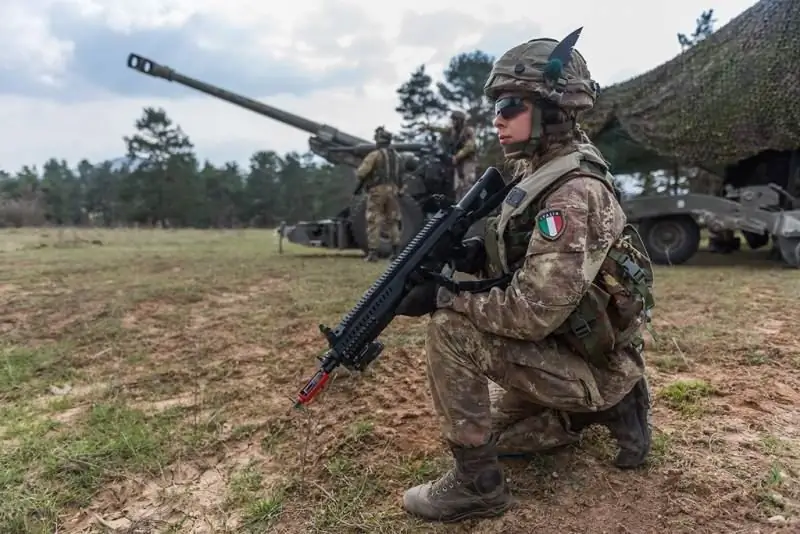
However, such well-being and prosperity did not come to this company immediately. After all, Italy lost the war together with Germany, the Beretta company (it just so happened) until the end of the war supplied weapons to Germany and it is not surprising that the victorious countries first entrusted her with only … to repair American Garand M1 rifles. The Italians repaired them, and did it so well that in the end they created their own VM-59 rifle. It seems to be a complete analogue of the M14, but for some reason she fired more accurately. And then it began …

Chambered for 5, 56 mm
Already in 1968, the Beretta company designed an automatic rifle AR-70/223 for the 5, 56-mm M193 cartridge, which in 1972 began to enter service with the special forces. Interestingly, both her trigger and gas engine were very similar, or rather even almost similar to those of our Kalashnikov assault rifle, but the receiver, which she “broke”, was clearly borrowed from such rifles as the FN FAL and M16. The gas engine was designed in such a way that it operated with a long working stroke, and the barrel was locked by turning the bolt and placing it on two lugs. That is, it is obvious that good is always good, to be sure. But … why then take and adopt the same copy of the AR-15 rifle, replacing the direct gas supply to the bolt with a piston one? It is easier to buy a license for its production, but replacing one unit with another is even easier … But no - we want everything our own, both in the external design (“let our rifle be the most“chubby rifle in the whole world”!) And in the details of its internal devices.


Following this rifle in 1985 (and on its basis) the AR-70/90 rifle was developed, but already chambered for SS109 - the standard 5, 56 × 45 mm NATO cartridge. A number of "modern" innovations at that time were introduced on it: a cut-off when firing three shots, and the magazine receiver was made according to the STANAG 4179 standard, so that magazines from M16 could also be inserted into it. The carrying handle, fashionable at that time, made in the manner of the M16 combined with the sight, also fell on this rifle.

Modular fashion
And then time passed and the fashion for modular weapons came. And immediately the Italian army needed another automatic rifle of a modular design. The concept of the new model was linked to the Soldato Futuro program - "Soldier of the Future", and it was put into mass production in 2008, initially as a commercial weapon system. A GLX160 grenade launcher for 40 × 46 mm ammunition was also created for it, which can be fixed under a rifle or used with a special butt as an autonomous weapon. Moreover, in the period from 2008 to 2014 for the army of the Italian Republic, the navy, the Italian air force and special forces, about 30,000 ARX160 rifles were supplied under the standard 5, 56 × 45 mm NATO cartridge, then under the "Russian cartridge" 7, 62 × 39 mm (model presented in 2012) and, finally, ARX160A2 chambered for NATO 5, 56 × 45 mm, which were used in a number of "hot spots", including Afghanistan. The new rifle was supposed to replace the AR70 / 90 (and has become!) As the standard assault rifle for all the armed forces of Italy, including the army and special forces.

More and more perfect and more perfect …
In 2013, Beretta also introduced the ARX160 A3, which is an improved version of the ARX160. Improvements consisted in the design of the forend (the new one improved barrel cooling), the use of a Picatinny rail on the bottom, as well as a more ergonomic pistol grip.
In 2014, the Italian Ministry of Defense allocated $ 2, 7 million to Beretta to develop a new ARX200 rifle. In addition, the Ministry of Defense stated that it is quite possible that the army and special forces will also need 1170 rifles chambered for NATO 7, 62 × 51 mm.
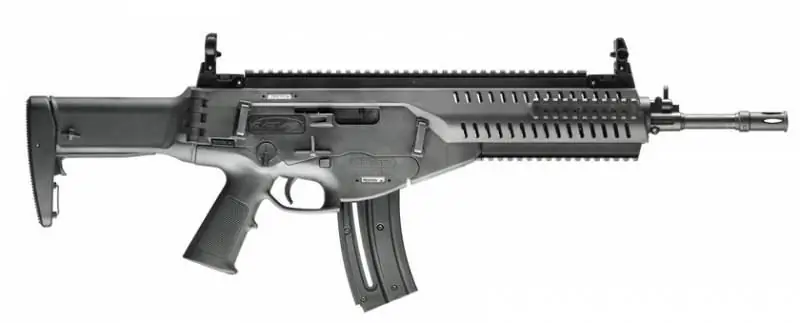
At the end of 2015, the company introduced a new ARX200 rifle chambered for 7.62 × 51 mm, which is a derivative of the ARX160. The Italian army plans to adopt the ARX200 rifle in two versions: with a folding telescopic butt and a sniper (DMR) variant with a fixed butt. The ARX200 is slated to bridge the gap in Italian infantry armament between the NATO 5, 56x45mm assault rifle and large-caliber sniper rifles - a decision based on the combat experience gained by the Italian military in Afghanistan. Today it has passed all the following necessary tests: low and high temperature, it was watered with sea water, frozen in ice, sprinkled with salt, sand, dust, and rolled in the mud, shot without lubrication, tested for soldier resistance and "protection from the fool" and that's all this sample withstood them successfully. The ARX200 has a three-position gas control for normal shooting, adverse shooting and low temperature shooting. The rate of fire is about 600-650 rounds per minute. The ejection of the sleeves is carried out only to the right, but the bolt handle can be switched from the right side to the left. Weight 3.9 kg without magazine.
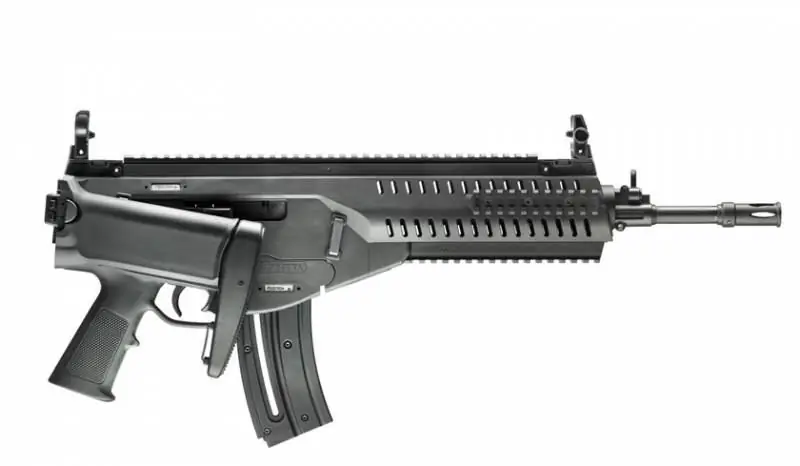
However, it seems that the Italians need not be in a hurry. Moreover, the ARX160 rifle is sold very well abroad. So, in February 2013, the Argentine army received an ARX160 rifle and a GLX160 grenade launcher to evaluate them as weapons of the national special forces. And in December 2016, the Argentinean state arms manufacturer Fabricaciones Militares finally signed an agreement with Beretta to manufacture the ARX200 under license. The Indian Army has also tested the ARX160 as a replacement for the INSAS rifle. But this tender was withdrawn in June 2015.

The ARX160 A3 was one of the five finalists of the French army's tender to replace the FAMAS, but it failed to win, the German HK416 rifle was (or seemed!) The best in terms of basic parameters.
In January 2019, the Romanian Armed Forces also chose the ARX160 A3 to replace the old PM Md.1963 (7.62 x 39mm) and PM Md.1986 (5.45 x 39mm). It was supposed to be produced at the Uzina Plopeni ROMARM enterprise in the fall of 2019.
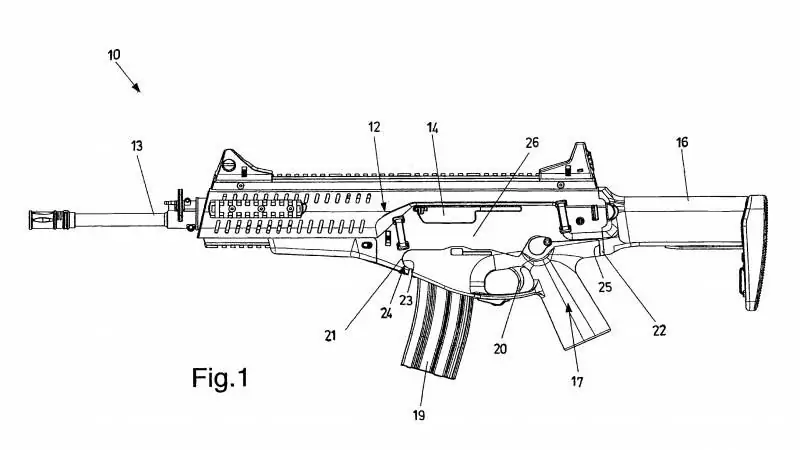

Common and Unusual
The design of the ARX160 rifle is different from that of the AR70 / 90. That is, this is a new rifle, not an improved version of the old one. The cartridges are 5, 66 × 45 mm NATO or 7, 62 × 39 mm, STANAG magazines for the NATO configuration 5, 56 × 45 mm and AK-47 or AKM magazines for the 7, 62 × 39 mm configuration. The use of other calibers was also planned, including 5, 45 × 39 mm and 6, 8 mm Remington SPC.
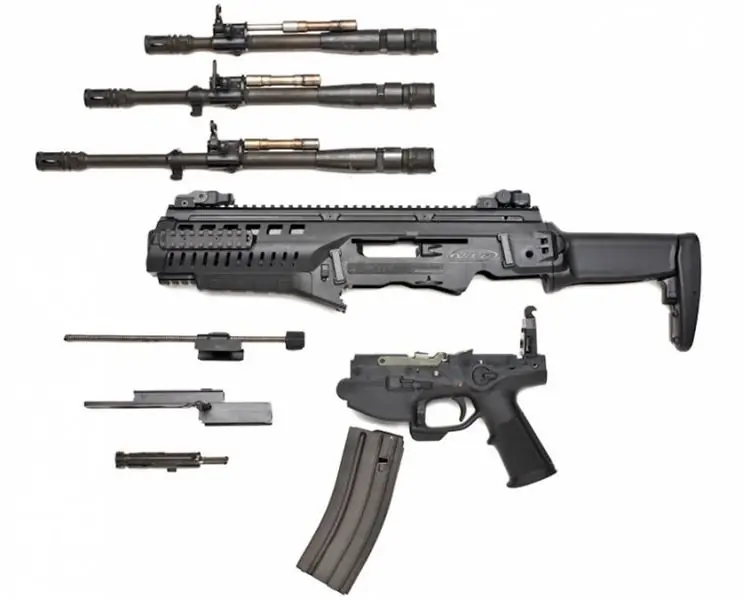
There is more than one magazine latch on the rifle. There are two of them: left and right. Probably for more convenience. The shutter handle can also be rearranged as you like. There are two windows for ejection of spent cartridges, both on the left and on the right, and you can change them by pressing the bullet nose on a special button. The rifle also has a quick-change barrel that can be removed and replaced in seconds without any tools, there are also four Picatinny rails and a folding telescopic stock.


The lightweight barrel is cold forged at the Beretta plant in Gardone Val Trompia in Lombardy. The barrel length for the rifle is 16 "(40.6 cm) for the standard barrel and 12" (30.48 cm) for the carbine. The flame arrester has five radial cutouts and four smaller cutouts to compensate for the rise of the muzzle of the barrel when firing bursts. The body of the rifle is very modern in design, made of plastic, just like the magazine. The bayonet is attached above the barrel, not below it.
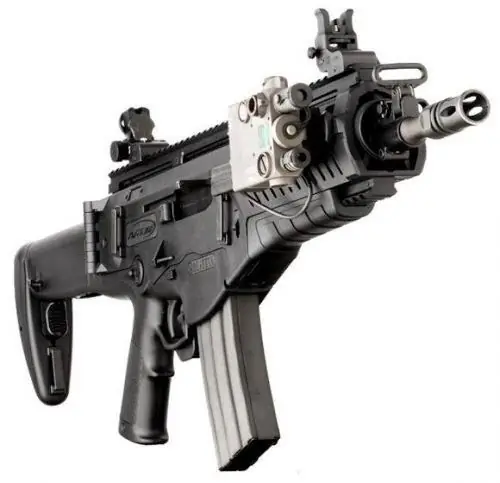
The ARX160 operating system is unique in that the piston of its gas mechanism moves at a distance of 50.8 mm, while others have a stroke of just a few millimeters. Therefore, the piston goes behind the bolt carrier almost to its stop, which ensures a low level of gas pressure in the barrel and … more comfortable recoil.
The shutter has seven lugs and an extractor, both left and right, without a pusher. The extractors are spring loaded and the liners fly out when ejected at a 45 degree angle from the barrel. This is convenient, since it prevents them from getting into the shooter's face.
The scopes are made from the same polymer as the magazine receiver. The front sight stand is horizontally and height adjustable, and the rear sight has six positions for firing in 100-600 meter increments. The primary telescopic sight is the Aimpoint ACIES, the Italian version of the Aimpoint CompM2. Telescopic sights, night vision systems, front grips and other accessories are being developed as part of the Soldato Futuro program.
Who uses what?
The ARX160 Modular Assault Rifle is used only by the military and law enforcement. It can use cartridges 5, 66 × 45 mm NATO or 7, 62 × 39 mm. In this case, it is necessary to replace the barrel, bolt, lower receiver assembly and magazine.
The ARX160 A2, also called the ARX160 SF (Special Forces), is similar to the ARX160 but has a shorter stock, an extended Picatinny rail at the bottom of the grip and a 305mm barrel.
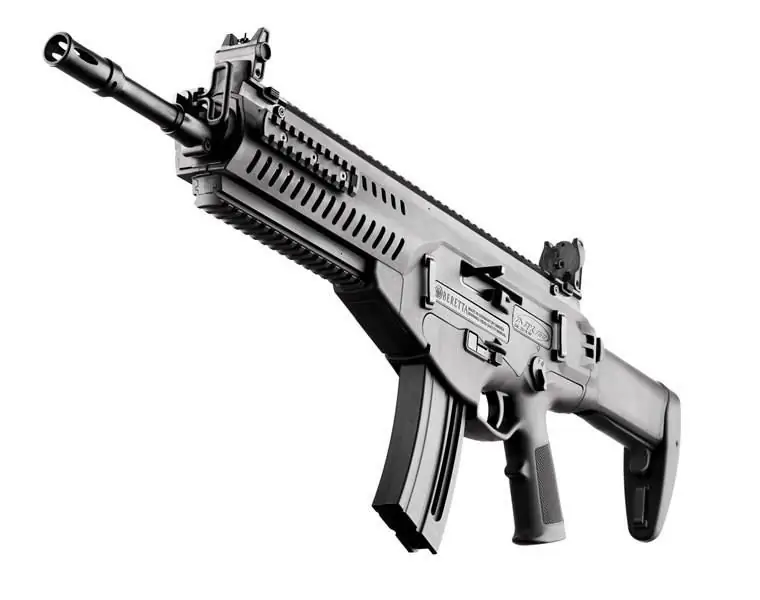
The Beretta ARX160 A3 is an improved version of the ARX160 and shares similar characteristics with it. The ventilation slots in the upper row on the forend (or the upper receiver, as this part has become fashionable now to be called) have been increased. The vent hole in the bottom row is the same size. This is done to lighten the weight of the rifle and improve air circulation around the heated barrel. Barrel length can be 280 or 406 mm.

The ARX100 is a semi-automatic variant of the ARX160 for the civilian market. This rifle uses 5, 56 × 45 mm NATO or.223 Remington cartridges. All other design details remained unchanged.
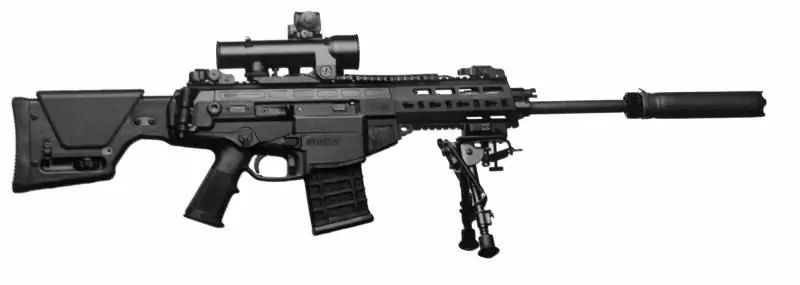
The ARX160 22LR is another semi-automatic variant of the ARX160 that is entering the civilian market. Uses the.22 Long Rifle cartridge, making this rifle an ideal weapon for shooting practice. Barrel length 406 and 280 mm, magazines for 5, 10, 15 or 20 rounds.






